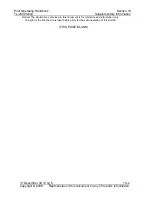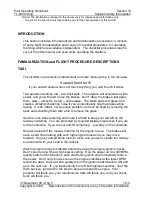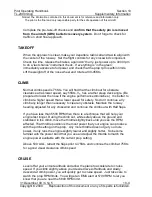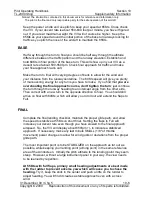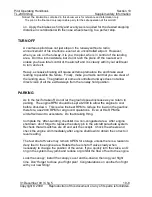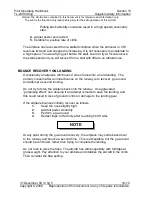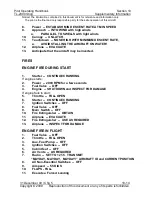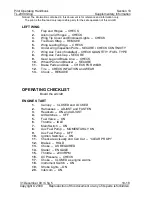
Pilot Operating Handbook
Section 10
TL-2000
Sting
Supplementary Information
Notice! The information contained in this document is for reference and information only.
The pilot is the final and only responsible party for the safe operation of this aircraft.
31 December 09 / Chg 5
10-14
Copyright © 2009 Reproduction of this document or any of its parts is forbidden.
8.
Power -- ESTABLISH MIN DESCENT RATE AT MIN SPEED
9.
Approach -- INTO WIND with high winds
a.
PARALLEL TO SWELLS with light winds
10.
Canopy -- UNLATCH
11.
Touchdown -- NOSE HIGH WITH MINIMUM DESCENT RATE,
a.
AVOID STALLING THE AIRCRAFT ON WATER!
12.
Airplane -- EVACUATE
13.
Anticipate that the aircraft may be inverted.
FIRES
ENGINE FIRE DURING START
1.
Starter -- CONTINUE CRANKING
If engine starts:
2.
Power -- 2000 RPM for a few seconds
3.
Fuel Valve -- OFF
4.
Engine -- SHUTDOWN and INSPECT FOR DAMAGE
If engine fails to start:
5.
Throttle -- FULL OPEN
6.
Starter -- CONTINUE CRANKING
7.
Ignition Switches -- OFF
8.
Fuel Valve -- OFF
9.
Main Switch -- OFF
10.
Fire Extinguisher -- OBTAIN
11.
Airplane -- EVACUATE
12.
Fire Extinguisher -- USE AS REQUIRED
13.
Airplane -- INSPECT FOR DAMAGE
ENGINE FIRE IN FLIGHT
1.
Fuel Valve -- OFF
2.
Throttle -- FULL OPEN
3.
Aux. Fuel Pump -- OFF
4.
Ignition Switches -- OFF
5.
Cabin Heat -- OFF
6.
Air Vents -- AS REQUIRED
7.
Radio -- SET TO 121.5. TRANSMIT
“MAYDAY, MAYDAY, MAYDAY!” AIRCRAFT ID and CURRENT POSITION
8.
All Non-Essential Switches -- OFF
9.
Airspeed -- 55 KIAS
10.
FLAPS - FULL
11.
Execute a Forced Landing



